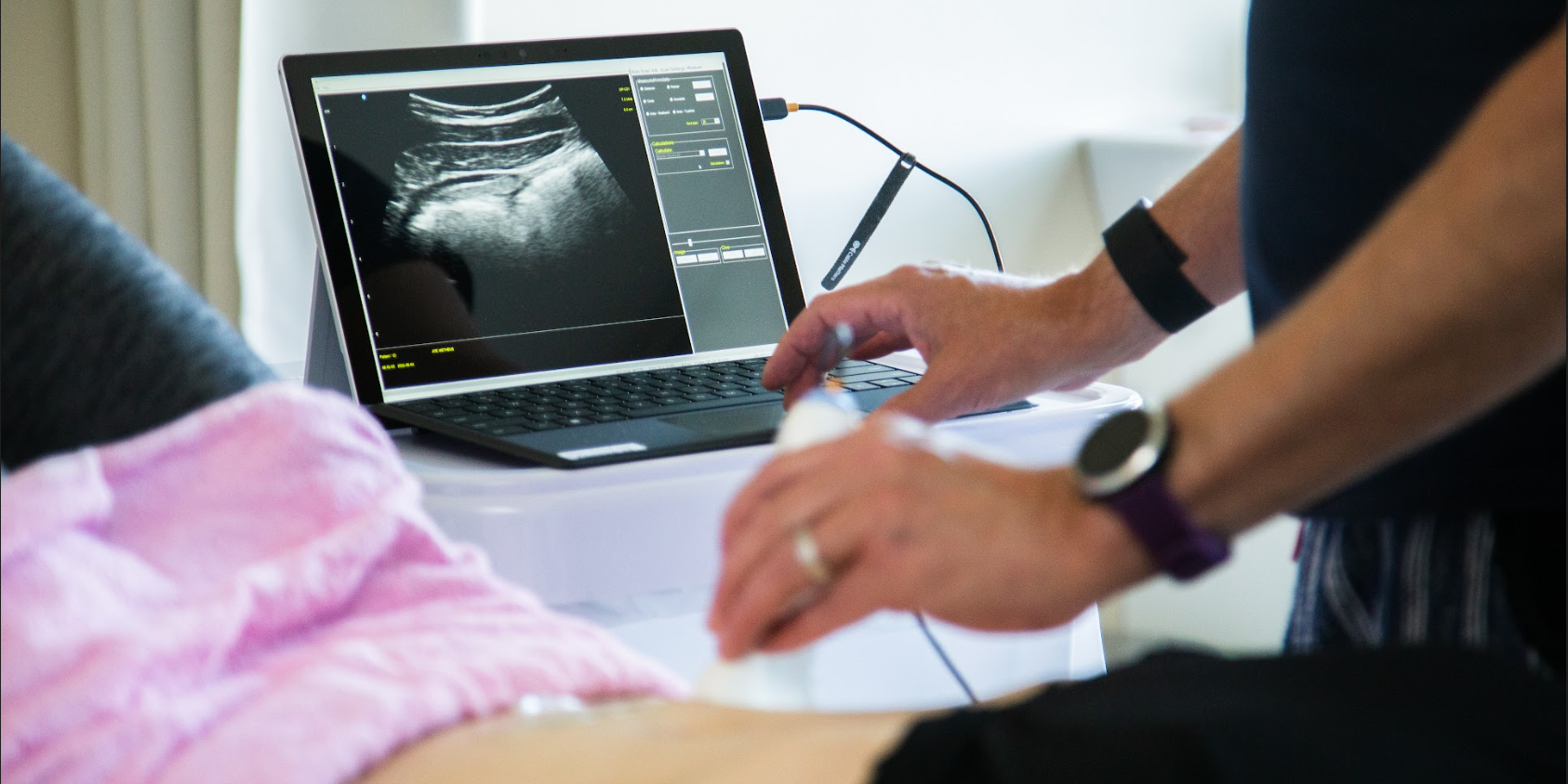We are thrilled to announce that the results of the November 2014 administration of the Pelvic Rehabilitataion Practitioner Certification (PRPC) are in! Thirteen incredible therapists have joined the ranks of Certifed Pelvic Rehabilitation Practioners!
Huge congratulations to the follwing dedicated experts who sat for and passed the exam this fall:
Lauren Calabrese, PT, DPT
Last week, Evidence in Motion, a large continuing education company that offers both live and online courses, announced that they are offering a new certificate program on pelvic rehab.
The Pelvic Health Certificate (PHC) includes a number of courses on male and female pelvic health.
At Herman & Wallace, we think it's wonderful to see yet another example of pelvic rehab being offered and promoted as part of "mainstream" physical therapy practice, particularly by an organization that has previously focused on orthopedics, manual therapy and sports medicine. The increased number of continuing education offerings on the topics of pelvic floor dysfuntion in men and women means that all the hard work our amazing faculty, course participants and certifed therapists have done over the years has finally brought pelvic rehab into the limelight!
This fall, Herman & Wallace will be debuting a brand new course, Integrating Meditation and Neuropsych Principles to Maximize Physical Therapy Interventions, in Winfield, IL. We sat down with the course instructor, Nari Clemons, PT, to learn more about this brand new offering.
What inspired you to create this course?
There is so much more to pain management than just manual techniques, and with meditation we can help patients with a mental shift to facilitate healing. Everyone is always telling patients to work on stress management, but so few people are really able to give patients usable, practical, useful tools to do so. We all know those patients who come in so keyed up or so caught up in playing the same tape in their heads, that we are not sure what we can do to help them. I meditate every day, and it has helped my life (and my patients) beyond measure. I know how many times I use meditation as a way for patients to benefit more from their treatment. In most of the Herman Wallace courses, we talk about using down training and stress management for conditions like overactive pelvic floor, constipation, urinary urge, dyspareunia etc. (even for Interstitial cystitis, the first line of treatment is now relaxation training) but, so few practitioners have access to these tools or this knowledge, so how are they able to help patients? I want to help bridge that gap.
This post was written by H&W instructor Brandi Kirk, PT, BCB-PMD. Brandi teaches Pelvic Floor Level One and Pelvic Floor Level 2A. You can catch Brandi teaching PF2A in Maywood, IL later this month!
Recently, I was lucky enough to attend a 3-day frozen cadaver (no formaldehyde) dissection course that sparked an inquiry in my ever-inquisitive mind. While we were working on our cadaver, the coroner who was working on the other side of the complex invited us over. She wanted to show us what Crohn’s disease looks like. She had small intestines on the table and they were dissected in order to show the inside lining. The terminal ileum, where the Crohn’s disease was located, had patches of red inflamed tissue in it. The coroner proceeded to say that there was a significant amount of adhesions along the cecum, around the ileocecal valve and into the terminal ileum stemming from a prior appendectomy. Of course my mind cannot just let this information go by without some analysis…. could the appendectomy have contributed to the development of Crohn’s disease?
Travel along this thought process with me for a moment. The field of science has, to date, not found the actual cause of Crohn’s disease. With the new information I gained at my dissection course, I began to formulate a theory. My theory? Maybe the adhesions and scar tissue created by the appendectomy began to cause issues in the terminal ileum, ileocecal valve and cecum. One issue could be a decreased flow in undigested or digested food particles/chyme that causes stagnation in the terminal ileum, and over time irritation and then an inflammation of the inner mucosa. The second issue could be that the adhesions could additionally cause a decrease in circulation and lymphatic flow in the area, which also could cause an inflammatory condition.
The first round of certification candidates have completed their testing, and we will soon announce the test takers who will be awarded with the letters "PRPC" for Pelvic Rehabilitation Practitioner Certification. Just over 70 candidates sat for the exam during our inaugural 2014 testing window, and are now eagerly awaiting their results (we thank them for their patience!)
Each step of this vigorous (and often tedious) process has been guided by Kryterion, a company who specializes in certification development. We want to give you an update about where we are in the process as many are interested in finding out how they performed on the test.
The "cut score" for passing the exam and earning the certification can only be determined after all the examinees have completed the exam, so we could not begin our work until the testing window closed on March 1st. Then, a group of 11-14 SME's (Subject Matter Experts) are gathered together on phone and web conferences to review each item. A SME is a person who meets the criteria to take the PRPC exam but cannot be someone who took the exam this year. Many of the SME's are therapists who have been involved in the process from the beginning, others have joined the group specifically for this last step, the review process.
This post was written by H&W faculty member Teri Elliott-Burke, PT, MHS, BCB-PMD. Teri will be teaching Pelvic Floor Level 2A in Maywood, IL next month.
A new product has hit the stores – Butterfly Body Liners. These pads are specifically designed to deal with fecal incontinence (aka ABL – Accidental Bowel Leakage). The good news is that advertisements for these pads bring fecal incontinence out in the open. The ads promote discussion of this topic and offer one solution for this condition. A patient first brought this product to my attention. So I thought it would be a good idea for all of you to know about them as well (as I have discussed the concept of the pad with other patients they have liked the idea). However, I would also like to voice two concerns: One is that the pads seem pricey ($.30 each) especially for patients who have to change them often or are on a fixed income. My second reaction is that for some people these small pads don’t have enough capacity to deal with the problem.
I am grateful for the development of pads for this condition, however I find myself frustrated with this advertisement, as well as advertisements for urinary incontinence pads. I find myself wanting to strangle celebrities touting the use of pads (notice so far none of them are willing to own up to fecal incontinence). The pads, which are a necessity for some, offer only a passive solution. The fact that this condition can be accurately diagnosed and treated is never mentioned. Of course, mentioning an active solution doesn’t sell the products. Therefore, we need to be the voices out there letting people know there is an active solution to this issue. This includes marketing to physicians to let them know of the treatment we can provide.
This post was written by guest-blogger, H&W faculty member Michelle Lyons, PT, MISCP, who will be teaching her brand-new course, The Athlete and the Pelvic Floor, in Columbus,OH in August..
‘I approached my advisor and told him that for my PhD thesis I wanted to study the pelvis." He replied ‘That will be the shortest thesis ever…there are three bones and some ligaments. You will be done by next week.’ I told him ‘I think there is more to it’. (Andry Vleeming Phd 2002)
In sports medicine, the primary source of specialist consultation is the orthopaedic surgeon, who may perform a wide ranging assessment of the musculo-skeletal system with no real evaluation of the pelvic girdle or pelvic floor musculature. The patient is unlikely to be asked about urinary, bowel or sexual dysfunction and often does not volunteer this information unless prompted (Jones et al 2013)
This post was written by guest blogger, H&W instructor Ramona Horton, MPT. Ramona teaches the Visceral Mobilization series of courses, as well as Myofascial Release for Pelvic Dysfunction course.
When I first began working as a pelvic floor PT in the early 90’s (the 1990’s that is), I spent a great deal of time marketing my program to physicians with less than stellar results. Sure, I got the odd referral here and there, but they were mostly the desperation patients that had run out of options. Not to be daunted by lack of success, I opted to present my message directly to the public; I took my “dog and pony show” on the road to senior health fairs, medical study groups and even civic organizations. Any group that was willing to put their comfort level aside and talk about their nether regions was fair game. Over time, the word got out to the physicians (mostly through their patients); our program grew and the need for marketing became a distant memory.
While reading a recent blog post on the subject of students in the pelvic floor rehab clinic by HW faculty member Bridgid Ellingson, I reflected on my current relationship with students in that same setting. Although I have had the traditional senior PT students, I am currently working with those of other medical professions. Yes, it seems the world has come full circle; one of those physicians I annoyed incessantly 20+ years ago until she started sending me patients is now serving as a preceptor for several medical schools. She supervises 4th year medical and PA students for their OB-GYN rotation. During this 6 week rotation, they have clinic hours, deliver babies, observe surgeries and spend a day with me in a pelvic rehab clinic. I try to arrange my schedule to have both male and female patients, a full new patient evaluation, sEMG session, manual therapy, use of RTUS imaging, and exercise programs.
This post was written by guest-blogger, H&W faculty member Michelle Lyons. You can catch Michelle teaching our Pregnancy and Postpartum series courses, Pelvic Floor Series courses, as well as our new courses on Oncology and the Pelvic Floor and the Athlete and the Pelvic Floor. Michelle lives in Ireland and was an integral part of bringing Institute founder, Holly Heman, to the UK to teach two courses this spring.
Two weeks ago, Institute founder Holly Herman took London by storm and presented Pelvic Floor Level 3 to an enraptured audience. Twenty one unsuspecting British and Irish physiotherapists gathered in the Chelsea and Westminster Hospital for an unprecedented weekend of pelvic health assessment and treatment techniques. They may have been surprised at the breadth and width of topics covered, from orthopaedics, hormones and surgery, but they weren’t the only ones who got a surprise that weekend.
The night before we started, Holly and I were at the hotel, preparing slides and tweaking the schedule, when a very familiar head popped around the corner – Diane Lee! To say that Holly was surprised would be something of an understatement (I had been sworn to secrecy for months beforehand – dire threats had been issued!) The hilarity and bonhomie that ensued set the tone for the rest of the weekend.
This post was written by H&W faculty member Elizabeth Hampton, who will be debuting her course, Finding the Driver in Pelvic Pain, in May at Marquette University.
Your client presents with a referral from an OBGYN for evaluation and treatment of vulvodynia. During your evaluation, you confirm that she has pubic symphysis instability and that her vulvar pain reduces by 90% with use of a pelvic compression belt. How do you screen for musculoskeletal dysfunction as well as specific urogyn/colorectal and pelvic floor issues in these complex clients? How do you develop the clinical reasoning methods to prioritize evaluation and treatment interventions? If you send a report back relating her pain to pubic symphysis instability, will the physician think that they sent this client to a PT who doesn’t understand the pelvic floor?
Your next client presents with stress urinary incontinence during box jumps and running, however she has no pelvic floor laxity and her strength is 4/5 bilaterally. She denies leaking with coughing, sneezing, lifting, bending. You notice that she has failed load transfer with jumping, weak abductors and marked anterior pelvic tilt that becomes more exaggerated with jumping. Her thorax is rigid and her habitual breathing method is with full abdominal wall relaxation. She demonstrates that a ‘core contraction’ means to her and she holds her breath and bears down. Is this an unstable urethra due to fascial incompetence, poor motor control or is it driven by her poor shock absorbtion with plyometrics?








































